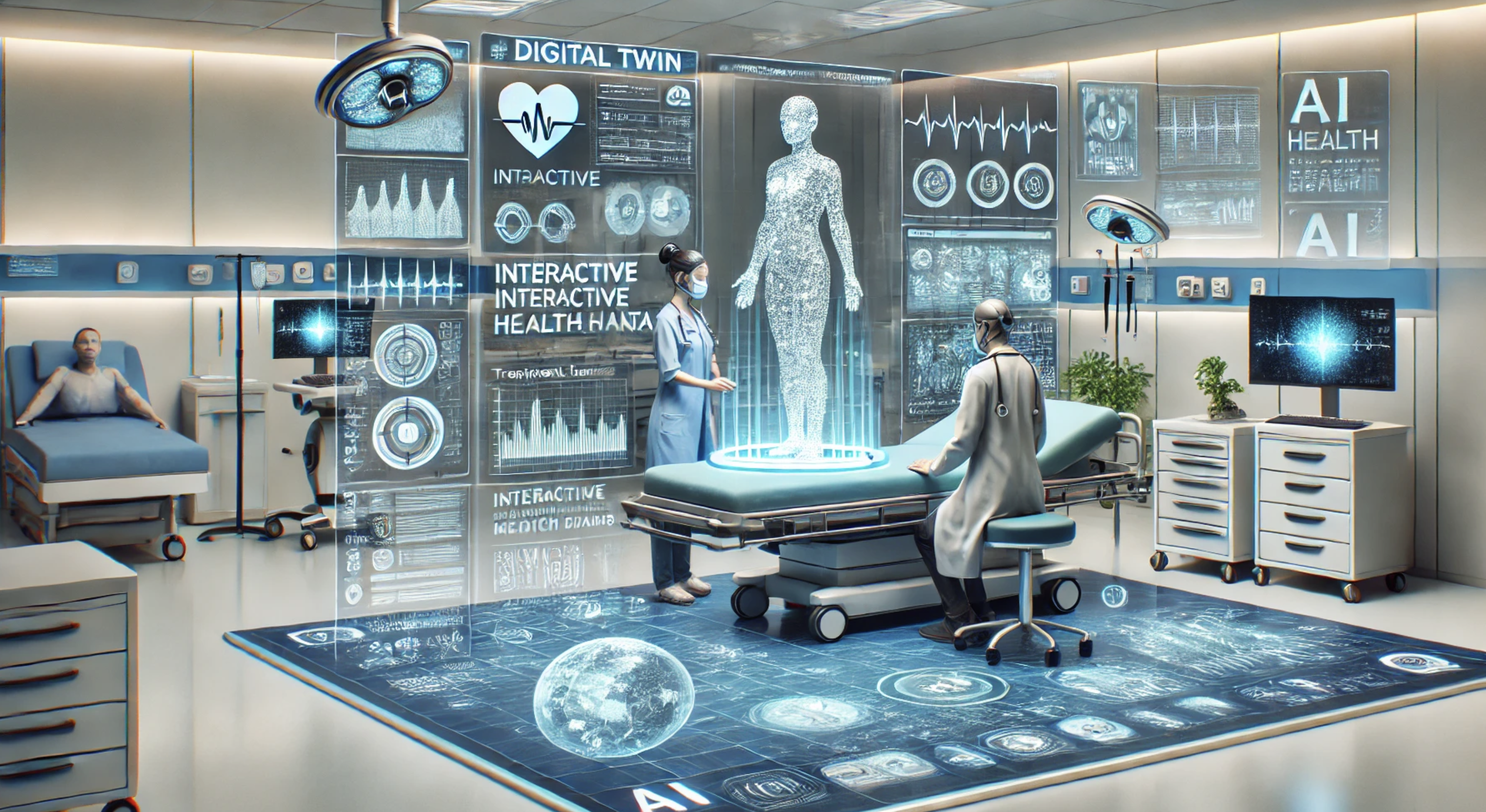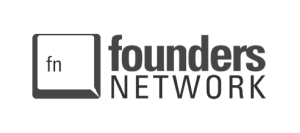Having spent two decades navigating the intersection of tech and business, innovation, in my eyes, is about achieving remarkable outcomes in uncertain environments.
Nowhere is this more evident than in the healthcare industry, a sector where the stakes are uniquely high, the potential for impact is immense, and stringent regulations add an extra layer of complexity.
The role of technology in the healthcare industry is more important than it’s ever been, and the industry is booming in the U.S:
🚀 The global telemedicine market was valued at $114.98 billion in 2023.
🚀 Healthcare technology is projected to generate an annual value ranging from $350 to $410 billion by 2025.
🚀 The digital health market is expected to exceed $900 billion by 2032.
🚀 The global AI healthcare market is expected to reach $272.91 billion by 2030.
This growth isn’t just about numbers—it reflects a broader shift towards more accessible, efficient, and personalised healthcare services.
We’re seeing diverse technological innovations transforming healthcare from traditional to modern, reactive to proactive, and generalised to personalised.
Despite the massive potential for growth in healthcare software solutions, custom healthcare software development faces persistent challenges.
In this article, I’ll examine what custom healthcare software development services entail, unravel some complexities, and explore how we support startups throughout the entire process, from ideation to launch and beyond.
Navigating Complexity: Challenges in Custom Healthcare Software Development
Developing software for the healthcare industry presents a unique set of challenges and considerations.
Unlike many other sectors, healthcare demands a meticulous approach due to its sensitive medical data, stringent regulations, and complex landscape.
Here’s why healthcare software development is so unique, and what startups need to keep in mind when they’re creating healthcare systems and products:
🔶 Regulatory compliance
Regulatory compliance ensures the safety, security, and privacy of patient information—and failing to comply with regulations can result in severe consequences, including legal penalties.
The complexity of compliance stems from the fact that there are multiple regulations, and they continuously change as technology evolves.
For developers, this means incorporating a range of legal, technical, and ethical considerations into healthcare software development and design.
Some of the most important compliance regulations to take note of when developing healthcare software products include:
🔹Health Insurance Portability and Accountability Act (HIPAA)
The Health Insurance Portability and Accountability Act (HIPAA) was implemented in 1996, and fundamentally reshaped how patient information is handled across the U.S. healthcare system.
There are three primary rules that make up HIPAA:
🛑 Privacy rule
Known as Protected Health Information (PHI), this rule aims to protect the confidentiality of identifiable health information by controlling access to patients’ healthcare data.
Healthcare software development services must implement robust privacy controls in their systems.
This ensures that PHI is accessed and processed only by authorised personnel for legitimate healthcare purposes.
🛑 Security rule
Focused on electronic PHI (ePHI), this rule establishes standards for the maintenance, transmission, and access of healthcare information.
The rule covers a range of technical and non-technical safeguards, including:
- Access controls to ensure only authorised access.
- Audit controls to monitor activity involving ePHI.
- Integrity controls to protect ePHI from alteration or destruction.
Developers need to integrate these safeguards into their software to ensure that patient data is encrypted, networks are secure, and activity logs are maintained.
🛑 Breach notification rule
In the event of a data breach involving unsecured PHI, this rule requires covered entities and their business associates to notify:
- Affected individuals.
- The Secretary of Health and Human Services.
- The media, if over 500 individuals are affected.
When building healthcare software, developers must incorporate mechanisms to detect breaches.
In addition, the notification process must be automated as much as possible to comply with the 60-day deadline in the event of a breach.
🔹The Health Information Technology for Economic and Clinical Health (HITECH) Act
The HITECH Act was introduced in 2009 as part of the American Recovery and Reinvestment Act, and it marked a significant transition towards digitisation in healthcare.
It aimed to drive the adoption of EHRs and encourage the meaningful use of digital technology across the sector.
- Some of the key components of the HITECH Act include:
- Adoption of EHR (electronic health records).
- Strengthened privacy and security protections for healthcare information established under HIPAA.
- Stricter enforcement of HIPAA rules and increased penalties for non-compliance.
- Health Information Exchange (HIE).
🔹 Health Level 7 Fast Healthcare Interoperability Resources (HL7 FHIR)
HL7 FHIR is a standard for sharing electronic health records (EHRs) that includes formats for data and an application programming interface (API) for exchanging EHRs.
FHIR aims to make healthcare information globally accessible and usable, and supports a wide range of applications including:
- Data exchange.
- Interoperability.
- Modular resource-based approach.
- Global standardisation.
- Security and compliance.
🔹 Medical Imaging and Communication in Medicine (DICOM)
Medical Imaging and Communication in Medicine (DICOM) is a standard protocol used for handling, storing, printing, and transmitting information via medical imaging software.
Essentially, it provides a common language for medical devices and systems to communicate, and it ensures that the imaging data and associated information can be securely shared across different systems and settings.
🔹 Payment Card Industry Data Security Standard (PCI DSS)
The Payment Card Industry Data Security Standard (PCI DSS) is a global standard that outlines security measures for handling credit and debit card information in order to prevent fraud and data breaches.
While it’s not specific to healthcare, it is relevant when payment processing is involved.
Whether payments are processed at clinics, through online patient portals, or via EHR systems, following PCI DSS ensures your healthcare software aligns with broader data protection mandates.
🔶 Patient-centric care
Healthcare software solutions need to be both medically effective and easily accessible to users.
To do this, developers need to deeply understand the varied needs of users, who range from healthcare professionals to patients. However, it’s important to remember that the primary clients are often larger corporate entities, such as hospitals or medical insurance providers.
Developers need to consider the decision-making processes of these entities when designing software solutions.
Ultimately, the goal is to create intuitive, user-friendly healthcare software while catering to both end-users and corporate clients effectively.
Key aspects of patient-centric healthcare software development include:
🔹Understanding diverse user needs
Developers need to create software that caters to a diverse spectrum of users. Users will have varying:
- Levels of comfort with technology.
Ages. - Educational backgrounds.
- Physical capabilities.
Factors such as ease of navigation and compatibility with assistive technologies (such as hardware, software, and peripherals for those with disabilities) need to be considered to contribute to improved patient care outcomes.
🔹 Intuitive and responsive design
The software’s design should prioritise ease of use, with a clear interface and responsive design that adjusts to different devices.
🔹 Effective communication tools
Integrating straightforward communication features like video calls, online appointments, or chat functions is vital for user safety and convenience, especially in urgent care situations.
🔹 Meeting consumer expectations
Today, users expect digital healthcare services to be readily available and easily accessible. Healthcare software must be flexible, scalable, and well-integrated to meet these expectations.
🔶 Data security
Given the sensitive nature of healthcare data, robust security measures are critical in custom medical software development.
Every layer of the software, from the user interface to the backend databases, needs to be protected against potential breaches, while keeping the following in mind:
🔹 Multi-faceted security measures
A multi-faceted approach to security includes multi-factor authentication to verify user identities, and automatic log-offs to prevent unauthorised access.
Encryption protects data, ensuring that even if information is intercepted it remains unreadable without the appropriate decryption keys.
🔹 Integration
Healthcare platforms often need to integrate with various healthcare information systems like:
- HIS (Hospital Information Systems).
- RIS (Radiology Information Systems).
- PACS (Picture Archiving and Communication Systems).
🔹 Navigating regulatory landscapes
For MedTech and HealthTech companies, understanding and complying with regulations across different markets is a continual challenge.
Early mapping of local standards and legal requirements can help align healthcare software development with the necessary frameworks, ensuring that the software is compliant and secure in every market it operates in.
🔶 Flexibility
Flexibility, especially in ensuring compatibility across various devices and platforms, poses a challenge in healthcare software development as technology continues to evolve.
Healthcare apps are expected to be adaptable and easily accessible, and often require compatibility with a wide range of devices, including:
✅ Smartphones.
✅ Tablets.
✅ Smartwatches.
✅ Computers.
✅ Fitness trackers.
✅ Medical devices with connectivity capabilities.
Each of these devices will have different operating systems, screen sizes, and hardware specifications, which makes compatibility a complex challenge for healthcare software developers.
In addition, healthcare software needs to ensure seamless data sharing and interoperability across different platforms for easy communication and collaboration among healthcare providers.
Healthcare applications should also be tailored to meet the needs and workflows of different healthcare providers and medical institutions.
This flexibility extends beyond the user interface to include:
- Backend systems.
- Data management processes.
- Integration with healthcare IT infrastructure.
🔶 Integration
Startups tend to focus on a very specific solution—generally, they start small and expand their scope. As they expand, they often think they’re solving the entire problem.
However, in regulated environments, what startups see as nearly the whole problem might only be a small percentage of what larger corporations consider important.
The bigger challenge is integrating these solutions into the existing systems of established companies.
Startups are quick to experiment with data and try new things, which seems natural in a fast-paced environment. However, large corporations, especially those in regulated fields, have a deep responsibility to protect customer and patient data.
In healthcare software development, it’s not just about moving fast—it’s about being careful with people’s information.
This necessitates seamless data and system interoperability.
Healthcare software developers face challenges with system compatibility, adapting workflows, and managing costs, all while ensuring that any changes don’t disrupt patient care.
The difference in how big companies versus startups view problem-solving underscores the need for startups to understand the broader context when aiming to collaborate with or develop solutions for larger, regulated entities.
The MOHARA Way: Our Approach to Healthcare Software Solutions
Navigating healthcare software development can be complex.
However, with our comprehensive approach, we aim to simplify the process for startups and entrepreneurs:
🔶 Step 1: Refine the product
At MOHARA, we approach healthcare software development with a comprehensive understanding of the industry landscape.
Our journey begins by immersing ourselves in the challenges users and healthcare providers face, all while keeping in mind the regulatory framework that shapes the healthcare sector:
🔹Navigate the “why, what, and how”
As an entrepreneur, you should already know your “why”—and you already understand the market enough to make informed decisions about what your customers find valuable.
With this knowledge, you probably already have a good idea of what your MVP (Minimum Viable Product) needs to deliver.
However, at this early stage, it’s difficult to demonstrate that your product is viable without users to provide feedback.
This is where we come in.
We leverage your insights and our industry knowledge to define the “how” and “what” through our “why, what, and how” product thinking approach:
✅ How: After identifying the problem your product solves, the next step is understanding how to bring the solution to life. This involves delving into specifics like what sets your product apart, what features it offers, and what the user experience entails.
✅ What: Once you understand the purpose (why) and implementation (how) of your product, it’s time to delve into the “what”. This is all about transitioning from the conceptual to the concrete: the specific solutions, functionalities, and characteristics that will define its identity and value proposition.
🔹Understand the competition
In healthcare software development, having the right knowledge can make all the difference.
At MOHARA, we specialise in helping entrepreneurs navigate this dynamic landscape.
Our team analyses existing solutions within the healthcare sector to gain valuable insights into both competitors and potential collaborators.
Here’s how we do it:
✅ Analysis: We dive deep into existing solutions to understand their strengths, weaknesses, and unique offerings.
✅ Opportunities: By scrutinising these solutions, we uncover exciting opportunities for innovation.
✅ Strategic positioning: Our goal isn’t just to compare ourselves to others. We ensure our clients make an impact by identifying avenues for differentiation and strategic positioning.
🔹Prioritise what is most important
The financial aspects of developing an MVP are a central consideration for any business, but especially for pre-revenue startups with limited time and budget.
Using our “golden equation,” we help founders reduce risk and plan MVP development within their budget constraints:
What Are Healthcare Software Solutions?
Healthcare software development involves creating and implementing software applications customised for the healthcare industry.
This includes patients, healthcare organisations and professionals, medical services, and other stakeholders involved in delivering and managing healthcare services.
The applications serve various purposes, from assisting medical professionals to engaging patients and managing administrative tasks.
As a whole, they aim to:
✅ Enhance patient care.
✅ Improve efficiency.
✅ Ensure data security.
✅ Support decision-making.
✅ Increase accessibility.
✅ Improve patient engagement.
At their core, healthcare software solutions transform traditional, manual processes into digitised, optimised workflows.
Some of the key areas of focus for healthcare software solutions include:
- Electronic Health Records (EHRs).
- Health Information Exchange (HIE).
- Medical billing software.
- Hospital management software.
- Data management software.
- Telemedicine software.
- Mental health software.
- Pharmacy management software.
- Wearable devices for health monitoring.
- Cloud solutions.
Adopting custom software solutions enables healthcare providers to focus more on patient care and less on administrative tasks.
Ultimately, this makes healthcare more responsive, accurate, and tailored to individual needs.

This equation looks complex, but it simply means the lifetime value you get from each customer (CLTV) should be greater than the combined costs of acquiring a customer (CTA), serving them (CTS), and building your product (CTB).
To calculate the golden equation, you’ll need to make some educated assumptions about the costs involved.
For example, in sectors like health care, the cost to acquire customers (CTA) can be high due to longer sales cycles. This impacts how much you can spend on developing your MVP. It becomes all the more important to allocate your budget wisely, such as by focusing more on essential features rather than aesthetics.
This doesn’t mean compromising on quality, but rather ensuring that investments are made where they’re most impactful.
💡 Expert Insight:
“With start-ups, we’re essentially looking at zero-to-one builds: coming from a problem to a product in the market.
We don’t have data to prioritise when building a proof of concept (POC) or MVP. You’d normally do this through user testing, whether through A-B testing & automation or user interviews with a select group of your customers.
But what we do have is a way of understanding what is actually the core of your product and the problem it’s solving. Instead of just looking at your features, you’re looking at the product as an entire unit which is made up of various features.
When building a zero-to-one MVP, your most important decision is actually what NOT to include.
You should constantly ask yourself whether this is needed to solve the problem. Can I take it out and still solve the problem?”
Sasha Benjamin – Engagement Lead at MOHARA
🔶 Step 2: Prototyping and validation
At MOHARA, we empower aspiring entrepreneurs to prototype, validate, and launch digital products swiftly with our Zero to One rapid prototyping and validation approach.
This approach leverages a variety of no-code platforms (including Airtable, Webflow, Wix, and Make) to ensure:
✅ Faster development: No-code tools facilitate rapid prototyping. This accelerates the product validation process and enables startups to iterate quickly based on feedback.
✅ Cost-effective: Startups can validate their ideas without significant financial investment, making it ideal for early-stage entrepreneurs.
✅ Accessibility: No-code platforms democratise product development, allowing non-technical users to bring their ideas to life without coding expertise.
✅ Flexibility: With a range of components, templates, and integrations, No-code platforms offer flexibility to tailor prototypes to specific requirements.
✅ Iterative improvement: Easy iteration based on user feedback ensures that prototypes evolve progressively, moving closer to achieving product-market fit.
✅ Risk reduction: By validating ideas with no-code prototypes, startups mitigate the risk associated with prematurely investing in full-scale development.
🔶 Step 3: Compliance and security
Developing custom medical software presents a unique set of regulatory challenges.
At MOHARA, we’ve honed a three-layered strategy to navigate these complexities—ensuring compliance without sacrificing innovation:
✅ Master regulations: We start with understanding the complex regulatory landscape. By decoding the legal jargon, we can translate it into actionable product requirements.
✅ Dynamic quality approach: We adapt our quality standards dynamically to fit each project’s needs. Whether it’s heightened security measures or laser focus on what matters for faster delivery, our approach ensures compliance without overburdening the process.
✅ User-centric focus: We balance regulatory requirements with a focus on user outcomes. By mapping user journeys and focusing on their needs, we deliver intuitive solutions that meet both regulatory standards and user expectations.
💡Example: How Healthcare Regulations Inform Your Product
Say, for example, you want to develop an app designed to help patients manage their medication.
A problem you’ve identified is medication non-adherence, where patients forget to take their medication on time or fail to follow their prescribed dosages.
You want the app to send reminders to users’ smartphones to prompt them to take their medication. However, this feature could inadvertently violate regulations if not implemented with compliance in mind.
For instance, if the app stores personal health information (such as medication schedules or specific health conditions) without proper security measures, it could expose sensitive data to unauthorised access or breaches.
This would be a violation of HIPAA, which requires strict safeguards for protected health information.
🔶 Step 4: MVP development
An MVP is the simplest version of your product that allows you to test your core assumptions with real users.
It’s about finding the quickest way to validate your idea and determine whether there’s demand for your product.
Our approach combines agility with strategic planning, allowing startups to test their assumptions and gather valuable feedback while minimising time and resources invested.
Following Eric Ries’s Lean Startup philosophy, we implement a build-measure-learn feedback loop. This entails:
✅ Starting with a problem hypothesis.
✅ Building a minimum viable product to solve it.
✅ Releasing the MVP to users to measure its effectiveness and gather feedback.
✅ Iterating based on user insights to refine the product further.
🔶 Step 5: Launch
Launching a healthcare tech product is no small feat, especially in a regulated environment.
We combine our expertise as a healthcare software development company with a deep understanding of the healthcare industry to enable startups to deliver their solutions to the market.
Here’s how:
✅ Testing: Before widespread launch, we encourage customer feedback through testing and pilot programmes. By incorporating user feedback early in the process, we can make adjustments to the product and refine the launch strategy.
✅ Launch planning: We work closely with startups to define what a successful product launch looks like by ensuring we’re aligned on objectives and have clear metrics for success.
✅ Adoption: We focus on creating a seamless first-time user experience to drive adoption and retention. Through user-centric design and intuitive onboarding processes, we aim to reduce barriers to entry.
✅ Ongoing support: Our support doesn’t end at launch. We provide ongoing assistance to startups, including bug fixes, performance optimisation, and product updates.
Innovate Fearlessly with Healthcare Software Development for Startups
Are you a startup looking to innovate in the healthcare industry? MOHARA is here to support you every step of the way.
Our team specialises in healthcare software development, guiding startups like yours through the complexities of regulations, compliance, and innovation.
Contact us to learn more about how we can accelerate your journey to success.











